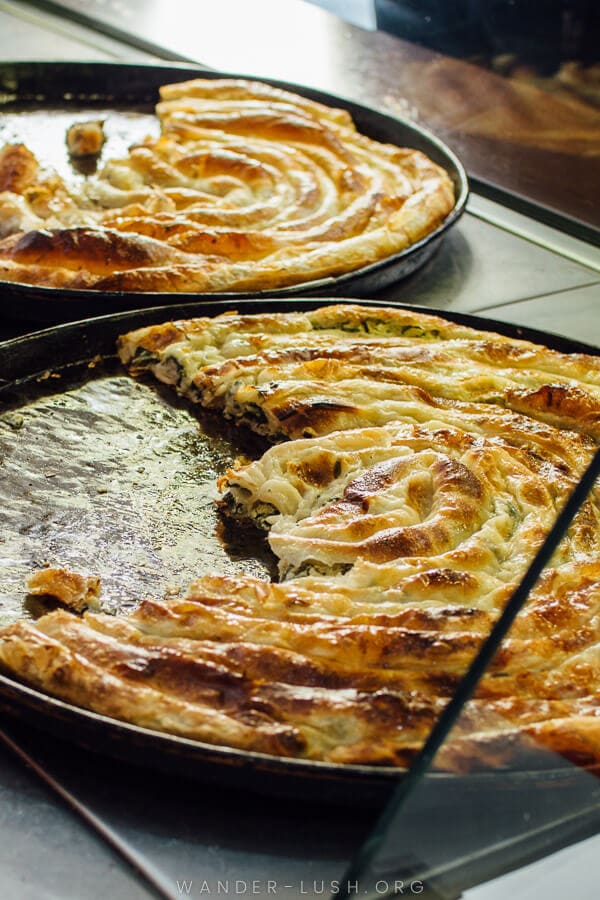Introduction: The Sweet Side of Bosnia and Herzegovina Cuisine
Bosnia and Herzegovina cuisine is well-known for its meat-based dishes, but what many people are not aware of is the rich diversity of desserts that the country has to offer. The sweet side of Bosnia and Herzegovina cuisine is a treasure trove of unique and delectable treats that are sure to satisfy any sweet tooth. From the classic baklava to more modern creations, the country offers a wide range of desserts that are perfect for any occasion.
Baklava: A Classic Sweet Treat
Baklava is a classic dessert that is enjoyed throughout the Balkans, including Bosnia and Herzegovina. It is a layered pastry made with phyllo dough, chopped nuts, and honey or syrup. The phyllo dough is brushed with butter between each layer to create a flaky and crispy texture. The filling is usually made with a mixture of chopped nuts, which can include walnuts, almonds, or pistachios. The dish is then topped with a sweet syrup or honey, which adds a deliciously sweet flavor to the crunchy pastry.
Tufahija: A Delicate Stuffed Apple Dessert
Tufahija is a delicate dessert that is made with baked apples stuffed with a mixture of ground walnuts, sugar, and cinnamon. The apples are then topped with a dollop of whipped cream or clotted cream. The dessert is typically served cold, making it a refreshing treat on a hot day. The combination of the baked apple with the sweet and nutty filling, along with the creamy topping, makes tufahija a delicious and satisfying dessert.
Hurmasice: A Buttery Delight
Hurmasice is a traditional Bosnian dessert that is made with a buttery dough infused with orange blossom water and rolled into small balls. The dough is then flattened and baked until golden brown. The warm cookies are then soaked in a sweet syrup made with sugar, water, and lemon juice, which adds a deliciously sweet and tangy flavor. The syrup also keeps the cookies moist and soft, making them a perfect tea-time treat.
Kadaif: A Crunchy, Nutty Confection
Kadaif is a crunchy and nutty dessert that is made with shredded phyllo dough that is layered with chopped nuts and soaked in sweet syrup. The syrup is made with sugar, water, and lemon juice, which gives the dish a tangy and sweet flavor. The shredded phyllo dough creates a crispy and crunchy texture, while the nuts add a nutty and chewy flavor. The dish is typically served cold, making it a perfect dessert for hot summer days.
Ustipci sa Grozdjem: A Fried Dough with Grapes
Ustipci sa grozdjem is a dessert that is made with fried dough balls that are filled with grapes. The dough is made with flour, eggs, milk, and yeast, and is fried until golden brown. The grapes are added to the dough balls before they are fried, giving the dish a sweet and juicy flavor. The dessert is typically served hot, making it a perfect comfort food during cold winter days.
Krempita: A Fluffy Custard Pie
Krempita is a fluffy and creamy custard pie that is made with layers of phyllo dough and a creamy vanilla custard filling. The custard is typically made with milk, sugar, eggs, and cornstarch, which creates a rich and creamy flavor. The phyllo dough layers are crispy and flaky, creating a perfect balance of textures. The top of the pie is usually dusted with powdered sugar, which adds a touch of sweetness and elegance to the dish.
Tulumbe: A Sweet Syrupy Treat
Tulumbe is a syrupy dessert that is made with fried dough that is soaked in sweet syrup. The dough is made with flour, eggs, and milk, and is piped into long strips that are fried until golden brown. The syrup is made with sugar, water, and lemon juice, which adds a tangy and sweet flavor to the dish. The fried dough strips are then soaked in the syrup, which makes them sweet and moist. The dish is typically served cold, making it a perfect dessert for hot summer days.




